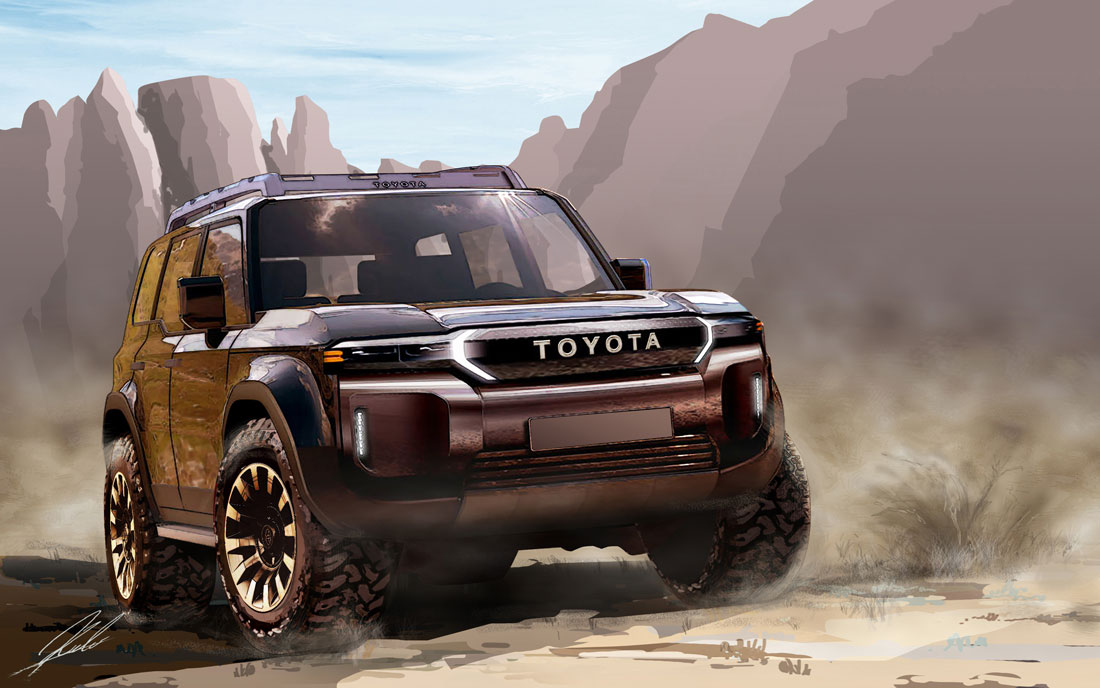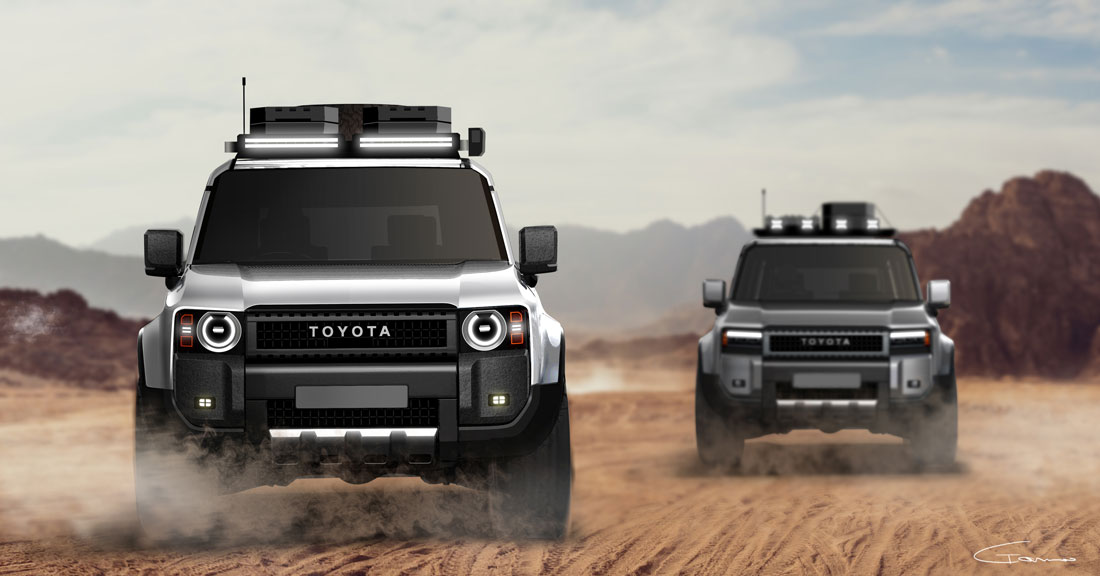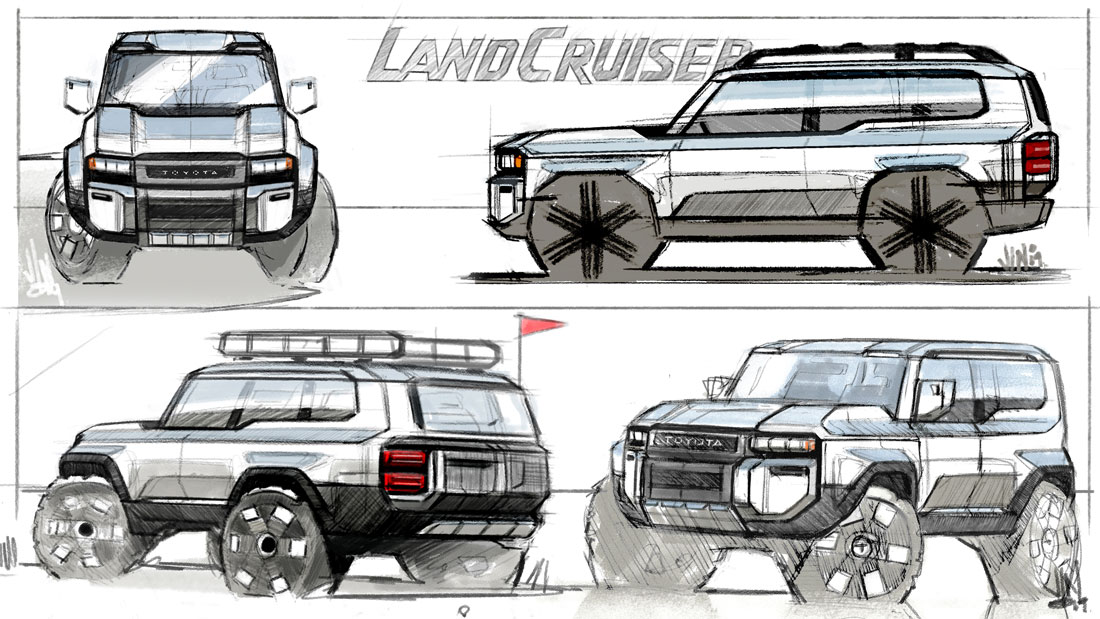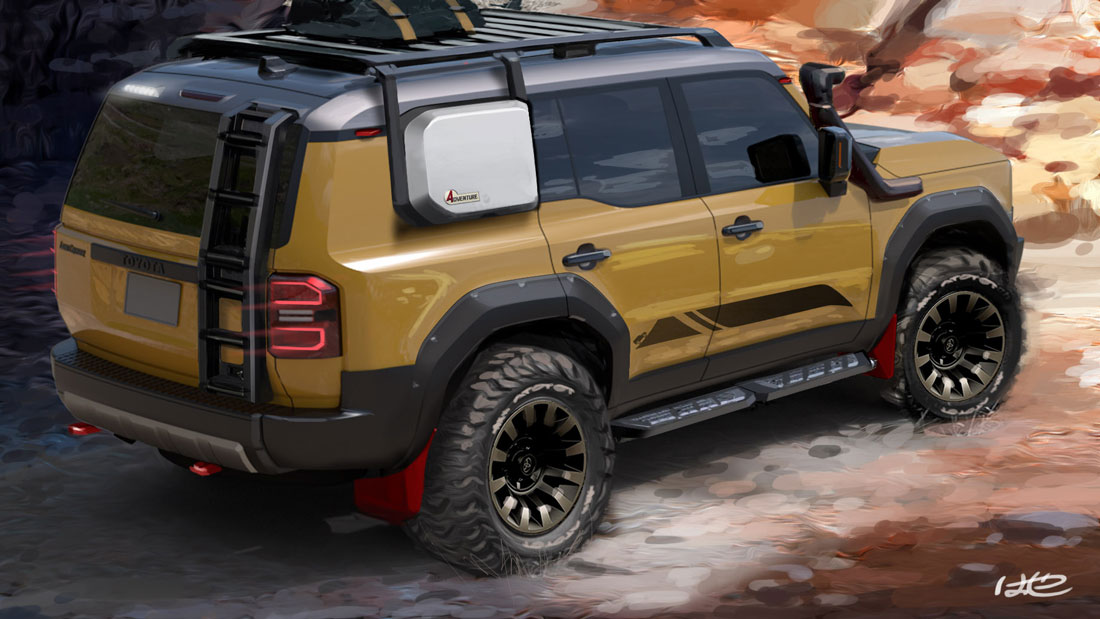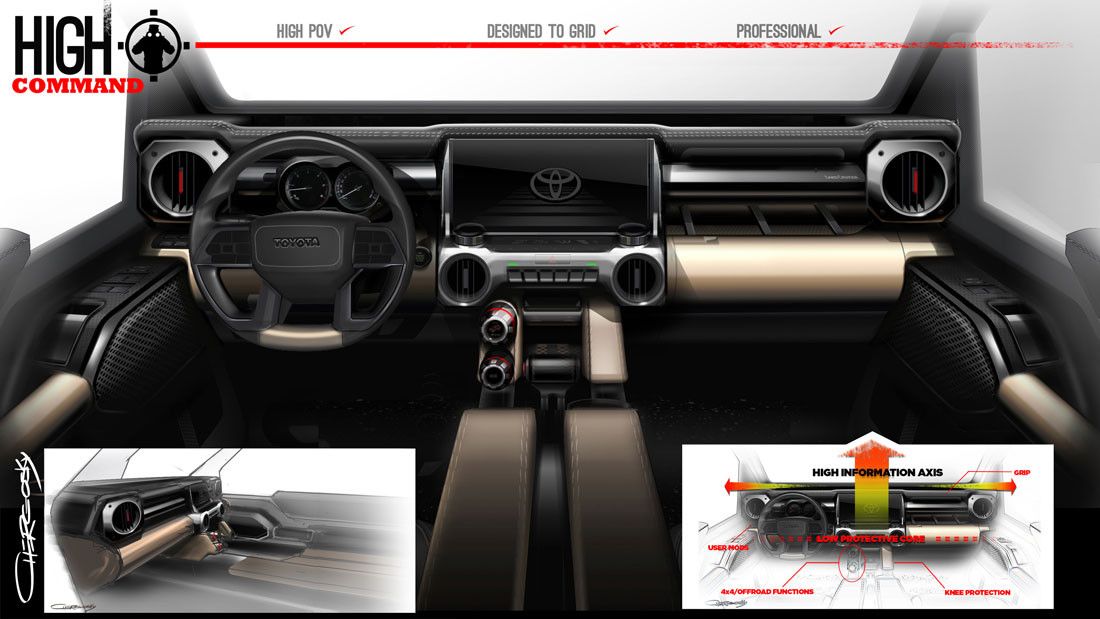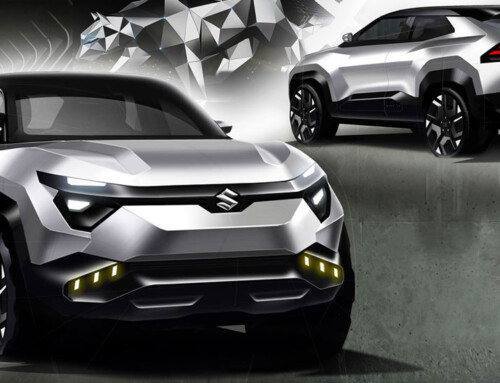It is a tradition, that of Toyota off-road vehicles, which has lasted since 1951, when the iconic FJ40 appeared on the scene challenging Jeep and Land Rover and giving life to a long series of heirs. Today, after a succession of 11.3 million units, it is the turn of the Land Cruiser 250 (it is called Prado, in some parts of the world), which also marks a global collaboration: between the designers in Japan, who have brought to completion the project, and the Californian studio Calty, where the exteriors of this powerful SUV took their first steps on the computer screen of chief designer Jin Kim.
Back to the origins
“With the 250 – explains Kevin Hunter – we tried to return to our roots, to the purity of an ultra-robust, long-lasting and reliable, linear and boxy off-road vehicle. However, don’t think that ours was a retro design. Many confuse retro with the influence of the past: well, our SUV, by introducing iconic stylistic features, has given that influence to a modern car.” Hunter is the president of Calty, a company founded in 1973 – last year it celebrated 50 years of existence – first with a small studio in El Segundo and then in an increasingly larger headquarters in Newport Beach (the name comes from California, Toyota and Yachioda Sangyo, a company that controlled 20 percent until 1999).
120 designers in the USA
Twenty years ago, in Ann Arbor, Michigan, a second studio was opened that deals solely with the design of cars destined for the North American market, while in Newport Beach the work essentially focuses on advanced design, therefore on ideas for the world market. Today, explains Hunter, Toyota’s two American centres – each covering an area of almost 8 thousand square meters – have a total of 120 employees including designers, digital and clay modellers, fabricators.
Capture the essence of its predecessors
“The brief wanted by Toyota design manager Simon Humphries – recalls Kim, with Calty since 2001 and now in the team of vice president of advanced design Ian Cartabiano – was to go back to our legendary tradition, to capture the essence of the predecessors: indestructible, reliable as if your life depended on it, capable of expressing trust. But all this performed in a contemporary key. It wasn’t supposed to be a fun toy, but a serious car.” Adds Hunter: “This return to basics has generated a lot of interest. We were inspired not only by the FJ40, but also by its successors. Considering how important visibility is in off-roading, we lowered the beltline and moved the A-pillars back in search of functionality.”
Platform sharing
Someone had also thought – and perhaps still thinks – of a two-door like the FJ40. “But probably – admits Hunter – global demand is more for four-doors, while a two-door would be a niche product.” In fact, the 250 shares the GA-F platform with the 300 (now marketed not as Toyota but as Lexus LX) and with the 70 (the workhorse in this Land Cruiser triad), but also with high-performance SUVs and trucks for American use: Tundra, Sequoia, Tacoma and 4Runner. It follows that the 250 is 4.92 meters long, 1.98 wide and 1.87 high and has a wheelbase of 2.85. But with one difference: “Those other models – explains Hunter – are not survival machines. This Land Cruiser is: it promises a happy return, it can save your life.”
Very close to the concept car
From the Californian prototype to the production Land Cruiser there were very few changes: the most visible, perhaps, is the shape of the front light clusters, rectangular in Calty’s vision and round (perhaps a nostalgic touch) on the production line. But the very geometric shape, the taut and straight lines, the easily interchangeable parts at the four corners of the car as befits an off-road vehicle, all this brings us back to the purity of the origins, to that FJ40 that still wants to have its say.
(Full article in A&D no. 265)

